
Photograph by Diane Wray, courtesy of History Colorado (CO SHPO)
Colorado, Reference number: 98001249
Area of Significance: Architecture, Landscape Architecture, Community Planning and Development, Social History
Period of Significance: 1949-1957
Arapahoe Acre's significance in community planning and development is grounded, in part, in its realization of important modern concepts in residential site planning and development such as the retention of natural grades; adaption of building designs to existing grades; and development of a diversity of home and lot sizes to appeal to families of varying size and resources. To establish significance, the nomination contrasts Arapahoe Acres from several contemporary Denver-area residential developments.
Link to file

Akron Beacon Journal Photograph Archives at Summit Memory
Ohio, Reference number: 100007724
Area of Significance: Architecture, Community Planning and Development
Period of Significance: 1891–1967
The Barberton Downtown Historic District, listed in 2022, is the physical manifestation of planning practices, making Criterion C in the area of community planning and development appropriate for this property. Planned by the Barberton Land and Improvement Company, the Barberton Downtown Historic District comprises the core of the industrial community. The period of significance for the Barberton Downtown Historic District begins in 1891 with the sale of the land, layout of the physical town, and construction of the first buildings; and ends in 1967 with the construction of the last significant commercial building constructed until the 1980s.
Link to file
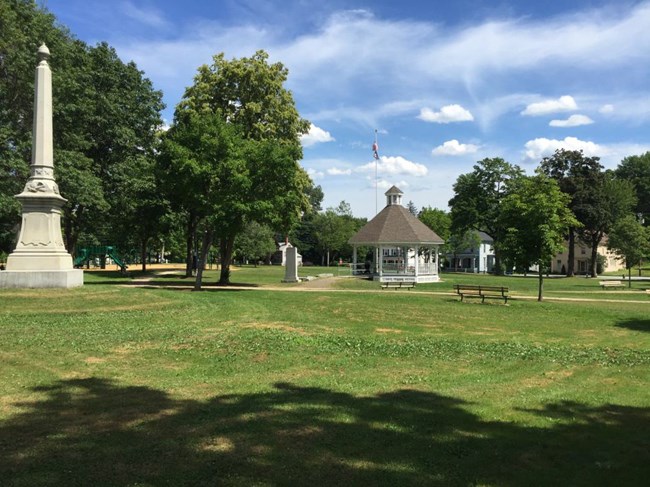
Photograph by Michael Goebel-Bain, courtesy of Maine State Historic Preservation Office
Brunswick Square
Maine, Reference number: 100006675
Area of Significance: Community Planning and Development, Entertainment/Recreation, Landscape Architecture
Period of Significance: c. 1808-1971
Laid out in 1808 and given to the city in 1824, Brunswick Square was integral in the development of the surrounding residential neighborhoods.
Link to file
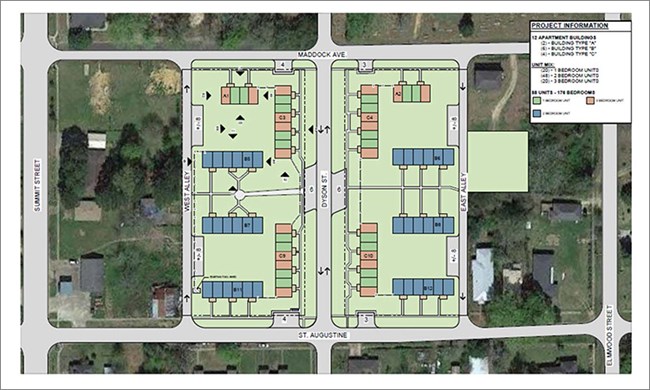
Plan by LDA Architects, courtesy of Mississippi Department of Archives and History
Mississippi, Reference number: 100009940
Area of Significance: Community Planning and Development, Social History, and Black Heritage
Period of Significance: 1940–1975
Burglund Heights Public Housing Project, listed in 2024, is grounded in the McComb community’s housing history and its relationship with federal programming. The nomination details the Burglund Heights Public Housing Project as locally significant as one of the first planned public housing developments of the nascent McComb Housing Authority. In addition to so-called “slum” clearance, two public housing projects in McComb were federally funded: Burglund Heights for low-income Black residents and White Acres for low-income White residents.
Link to file
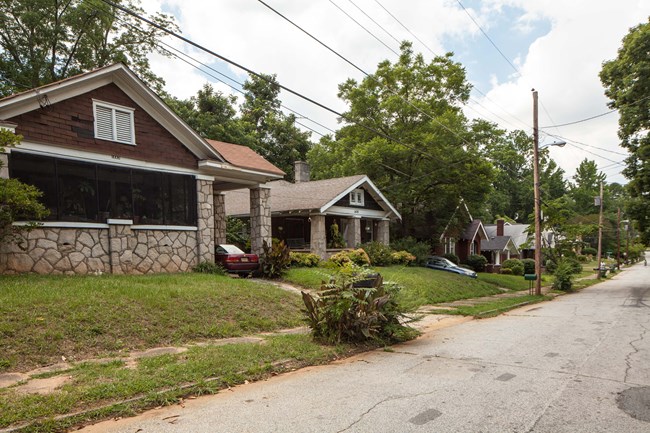
Photograph by Charlie Miller, courtesy of Georgia State Historic Preservation Office
Georgia, Reference number: 16000195
Area of Significance: Community Planning and Development, Architecture
Period of Significance: c. 1867- 1966
This nomination documents an early streetcar suburb of Atlanta that reflects some of the national trends of its time. It was built in response to the rapid population growth of Atlanta and the need for affordable housing on the south side of the city. The district contains primarily single-family houses, which are arranged regularly on a gridiron street pattern and the historic houses reflect almost 100 years of residential architecture with a variety of types and styles common to middle-class communities in Georgia.
Link to file
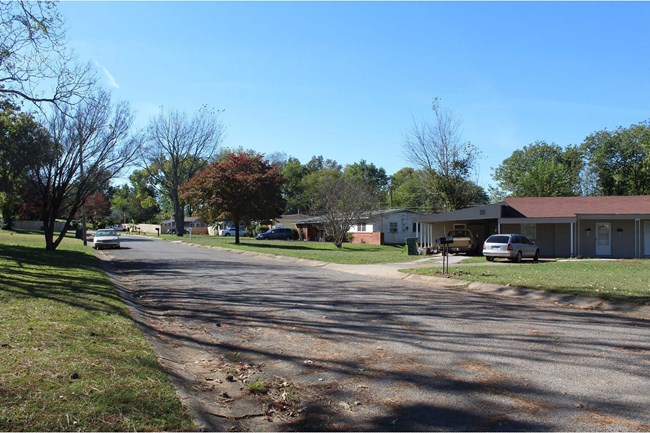
Photograph by Caroline T. Swope, courtesy Alabama Historical Commission
Alabama, Reference number: 100006659
Area of Significance: Community Planning and Development, Ethnic Heritage: Black, Architecture
Period of Significance: 1959-1975
Edmonton Heights is Huntsville’s only planned suburb for African Americans. It illustrates the effects on the African American community of post-war growth, urban renewal, and racial discrimination in federal and local housing policy.
Link to file

Photograph by Alexa McDowell, AKAY Consulting, Boone, lowa
Minnesota, Reference number: 12000284
Area of Significance: Community Planning and Development, Engineering
Period of Significance: 1900-1924
This nomination presents an example of a single resource that served as the impetus for the planning and development of the community. The development of an adequate fire protection system through the organization of a permanent fire department and the construction of a modem waterworks system created a measure of stability that allowed Elk River to grow into the community it is today.
Link to file
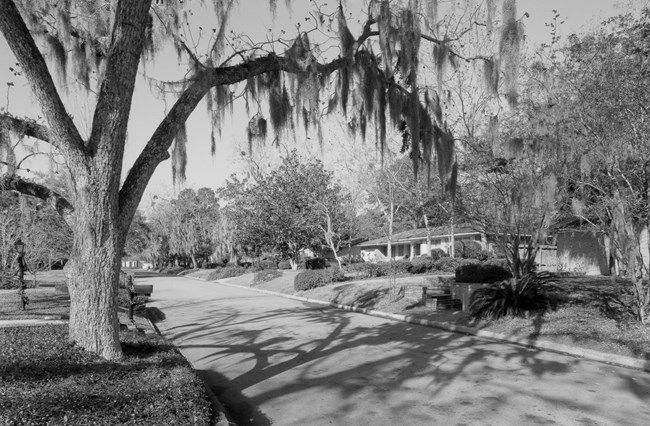
Photograph by James R. Lockhart, courtesy of Georgia Department of Natural Resources
Georgia, Reference number: 09000184
Area of Significance: Community Planning and Development, Architecture
Period of Significance: 1950-1965
The Fairway Oaks-Greenview Historic District is significant for its precedent-setting role in establishing a new, modern way of planning and developing residential suburbs in mid-20th-century Savannah. The nomination presents mid-century modern house types and styles built on large, wooded lots of varying shapes and sizes set among a series of curvilinear streets.
Link to file
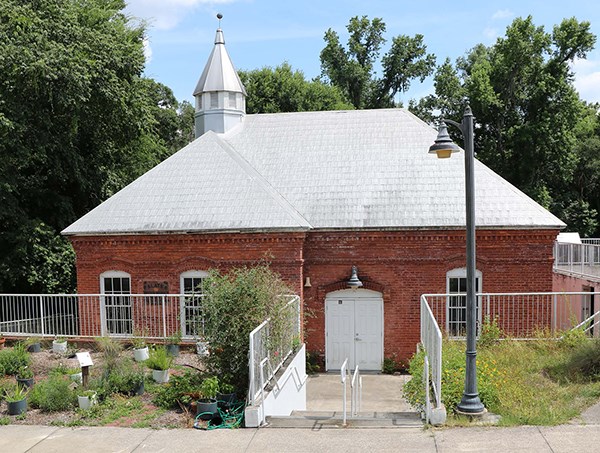
Photograph by Andrew Waber, courtesy of Florida Department of State Division of Historical Resources
Florida, Reference number: 100008739
Area of Significance: Community Planning and Development, Engineering
Period of Significance: 1886-1887 (CP&D), 1886-1963 (engineering)
Properties vital to the establishment or operation of a town—such as a post office, city hall, fire station, or jail—may be eligible individually for their significance in community planning and development. For example, a resource associated with critical infrastructure, such as the Palatka Water Works, may be eligible under this area of significance. This facility provided clean drinking water and supported a network of fire hydrants throughout the community, greatly aiding community growth.
Link to file

Photograph by Richard Weinowski, courtesy of Missouri State Historic Preservation Office
Missouri, Reference number: 15000760
Area of Significance: Community Planning and Development, Architecture
Period of Significance: 1965-1968
The process of implementing Ten Main Center paved the way for urban renewal within the central business district of the city and was, therefore, pivotal for Kansas City’s economic future. This single resource is significant under community planning and development. The multi-use complex in the Modern Abstract Monumental Style was unconventional for the time, consisting a twenty-one story office tower connected to seven-story garage.
Link to file
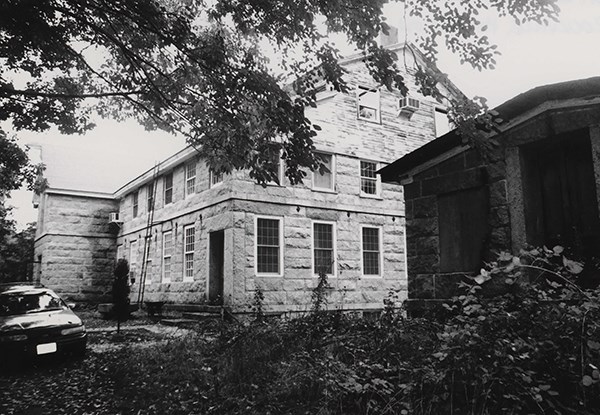
Photo by Kathryn J. Cavanaugh, courtesy Rhode Island Historical Preservation & Heritage Commission
Rhode Island, Reference number: 06000552
Area of Significance: Industry, Architecture, Community Planning and Development
Period of Significance: 1844-1845, 1851, and 1863-1870
It is unusual for a single resource to influence or serve as an important reflection of broad planning principles and development trends. However, there are exceptions, such as the Upper Rockville Mill. This property was listed in 2006 as a building (with six contributing resources) at the state level of significance with multiple periods and areas of significance, including community planning and development. The two surviving mill buildings, dating from the mid-nineteenth century, served as the nexus for the development of the village of Hopkinton.
Link to file
Last updated: January 10, 2025
